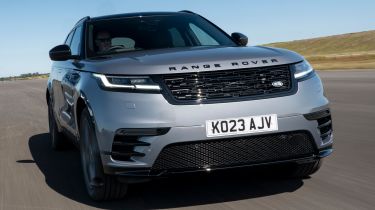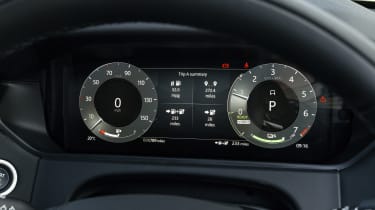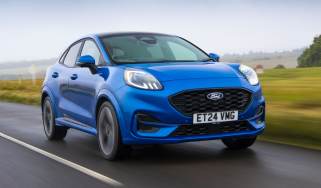Range Rover Velar review - MPG, CO2 and running costs
Although a little more expensive to buy, the plug-in hybrid Velar is a desirable company car option

The Range Rover Velar is different from some of the more attainable Land Rover models, such as the Evoque and Discovery Sport, because there is no front-wheel drive version offered. Even the entry-level diesel is 4WD only, which fits with the car’s high-end target market.
The D200 and D300 diesels both feature mild-hybrid technology to help boost efficiency ever so slightly over those without any hybrid assistance. According to JLR, the D200 engine can return between 40.4-44.1mpg across a mixture of driving conditions, while the more powerful D300 will return 36.7-39.2mpg on average.
CO2 emissions range from 168-183g/km for the D200 and 188-202g/km for the D300, again in mixed driving conditions.
The P250 petrol engine is the only one in the Velar range that doesn’t utilise hybrid technology, with the 2.0-litre four-cylinder unit offering average fuel economy figures of 28.5-30.7mpg. The least efficient model in the lineup is the P400 petrol – JLR says the six-cylinder mild-hybrid, with its 394bhp, will return between 27.7-29.4mpg on average. CO2 emissions also increase slightly from 211-226g/km for the P250, up to 219-232g/km in the P400.
The P400e plug-in hybrid is one to go for if you want maximum fuel economy or are hunting for your next premium company car. The Velar PHEV combines a 2.0-litre four-cylinder petrol engine with a 141bhp electric motor, which draws its energy from a 19.2kWh battery (although only 15.4kWh of that is usable). Because this version can cover a decent amount of miles without using a drop of petrol, JLR says it can average 176.6mpg, but you’ll really need to exploit its EV mode to get anywhere near this figure in real-world driving.
More reviews
Car group tests
In-depth reviews
Road tests
- New Range Rover Velar P400e 2023 facelift review
- New Range Rover Velar P400e PHEV 2021 review
- New Range Rover Velar SVAutobiography Dynamic 2020 review
- New Range Rover Velar D180 2019 review
- Range Rover Velar P300 2018 review
- Range Rover Velar 2.0 diesel 2017 review
Used car tests
Nevertheless, it remains impressive economy compared to the rest of the Velar lineup, but Mercedes claims the plug-in versions of its latest GLC Coupe will average between 565-700+mpg, so it’s not the only PHEV that offers superior efficiency. We didn’t find the plug-in Velar to be very frugal once its battery runs dry, either. On longer trips you will struggle to get much above 30mpg out of the P400e, while a Lexus NX 450h+ will get closer to 50mpg with an empty battery.
Other plug-in hybrid SUVs emit less CO2 than the P400e as well. But the 40g/km coming out of the Velar PHEV means it attracts an 8 per cent Benefit-in-Kind (BiK) company car tax rate, while the diesel models sit in the 37 per cent band.
Electric range, battery and charging
The next-generation Range Rover Velar will be all-electric, but for now the best option for those wanting improved efficiency is the P400e plug-in hybrid. The Velar PHEV uses a 19.2kWh battery that allows for an official range of 38-40 miles, depending on the specification. But based on our experience, you’ll cover closer to 30 miles in EV mode before the battery runs out of juice.
Speaking of which, the Velar is one of the few PHEVs with rapid-charging capabilities. Plug the Velar P400e into a 50kW rapid charger and a 0-80 per cent top-up only requires 30 minutes. We expect most people will charge the car at home however, with a typical 7kW home wallbox able to fully replenish the Velar’s battery in two and a half hours.
Insurance groups
The Velar’s insurance ratings are on par with those for the BMW X4, Mercedes GLC Coupe and Porsche Macan, which is a solid achievement when you consider the Velar’s cost and desirability. The entry-level diesel sits in group 36 (out of 50), while the range-topping Autobiography P400 mild-hybrid climbs all the way to group 47.
You can get personalised car insurance quotes fast with our comparison tool powered by Quotezone
Depreciation
Our latest expert data suggests that the Velar should retain between 59 and 65 per cent of its original value over three years and 36,000 miles. The Porsche Macan is projected to hold onto roughly the same amount (62-66 per cent) come trade-in time, while the Mercedes GLC should retain around 52-58 per cent of its list price.
To get an accurate valuation on a specific model check out our valuation tool...










